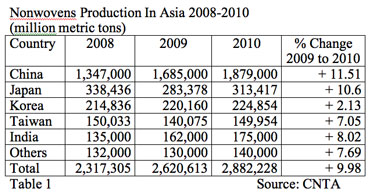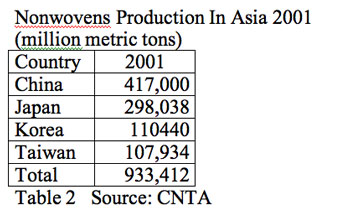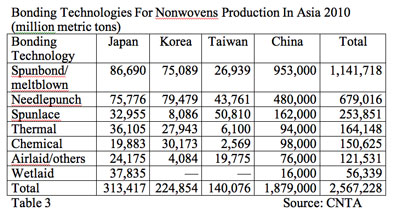RESEARCH TRIANGLE PARK, N.C. — June 29, 2011 — The AATCC Foundation awards thousands of dollars in
grants and prizes each year. Congratulate the Color Solutions International scholar, the Gavin
Family Scholarship recipient, and the seven Metro Scholarship winners!
Amanda Grisham, from Oregon State University, was awarded the
2011 Color Solutions International Textile & Apparel Design Scholarship. Grisham
recently completed her junior year as an Apparel Design & Merchandise Management major. She is
also pursuing a minor in Business & Entrepreneurship. Grisham says her career goal is to
“create garments that are functional, practical, and beautiful.” Advisor Brigitte Cluver says
Grisham has already sought out “opportunities to better prepare herself for her future
career”-including joining AATCC as a student and attending a regional meeting of the Association.
The US$2,500
Color Solutions International scholarship is awarded annually to a student studying
textile or apparel design.
Rachel Anderson, North Carolina State University, was awarded the US$5,000
Charles E. Gavin III Family Scholarship. The Gavin Scholarship is available for eligible
rising freshmen, sophomores, juniors, or seniors at Auburn University, Clemson University, the
Georgia Institute of Technology, North Carolina State University, or the University of Georgia. (It is the desire and hope of the Gavin Family that those students who are chosen to receive
this scholarship will, someday, consider passing this opportunity on to another deserving
student.) Anderson is studying Textile Engineering with a minor in Industrial and Systems
Engineering. Though she started as a Computer Engineering student, Anderson realized that she “was
more interested in using computers than making them.” She says, “I have since realized how broad of
a field Textiles is, and I have found a specific niche within the Textile Engineering discipline
that feels almost as if it was created for me.” Anderson hopes to use her skills to model and
optimize outsourcing and response to fluctuations in demand within the textile industry. Professor
Melissa Pasquinelli praises Anderson’s work ethic and intellect. “The types of questions that she
asks both during and outside of class indicated that she not only comprehended the information, but
that she was applying, analyzing, and synthesizing the material.
The
AATCC Foundation Metro Scholarship is an annual scholarship offered to sophomores and
juniors in New England, New York, and New Jersey attending universities with student chapters of
AATCC. The scholarship can be divided among several student recipients, with a minimum award of
US$1,000 each.
The 2011 winners of the Metro Scholarship were:
Elizabeth Hogan, University of Rhode Island, considers the Textile Marketing
program a great opportunity to pursue her interests in marketing without being a full-time business
student. She also plans to complete a minor in Art.
Jill Austin, University of Rhode Island, is studying Textile Merchandising and
Design, with a minor in Art History. She says she is obtaining fundamental business skills and
studying “all aspects of fashion,” but designing clothes has been her passion since she was 10
years old. Austin plans to attend graduate school after completing her degree and hopes someday to
show a collection at New York’s fashion week.
Dana deBoer, University of Rhode Island, is pursuing a BS in Textiles, Marketing
& Design. Her minor is in Fine Art. DeBoer created her own fashion magazine and currently
interns for a fashion blog. She hopes to pursue a career with a major fashion publication.
Elina Franco, University of Rhode Island, plans to translate her major in Fashion
Merchandising and minor in Business into a career as a buyer for a major retailer. She says, “No
matter what, I know I will be successful in my career because when I want to achieve something, I
do not give up.”
Sara E. Hughes, a University of Rhode Island Textile Merchandising and Design major,
says that “as long as I can remember, fashion has had a huge impact on my life.” Hughes wants to
“spend the rest of my life doing what I love and enjoying the world of fashion.”
Sania Josiah, a Textile Merchandising and Design major at the University of Rhode
Island, is eager to share her creativity. She explains that fashion is three-dimensional
art-“taking a drawing from a sheet of paper and giving it shape and angles, making it realistic,
bringing it to life.” Josiah plans to return to her home country of Liberia to build a fashion
design school.
Amanda Steele, University of Rhode Island, has the goal of working in the military
textile industry. She says, “Innovations in textiles can provide a huge advantage to the men and
women fighting for America; keeping these men and women safe at battle means a great deal to me.”
She is studying textile science in hopes of being one of the innovators in the industry.
Posted on July 5, 2011
Source: AATCC







